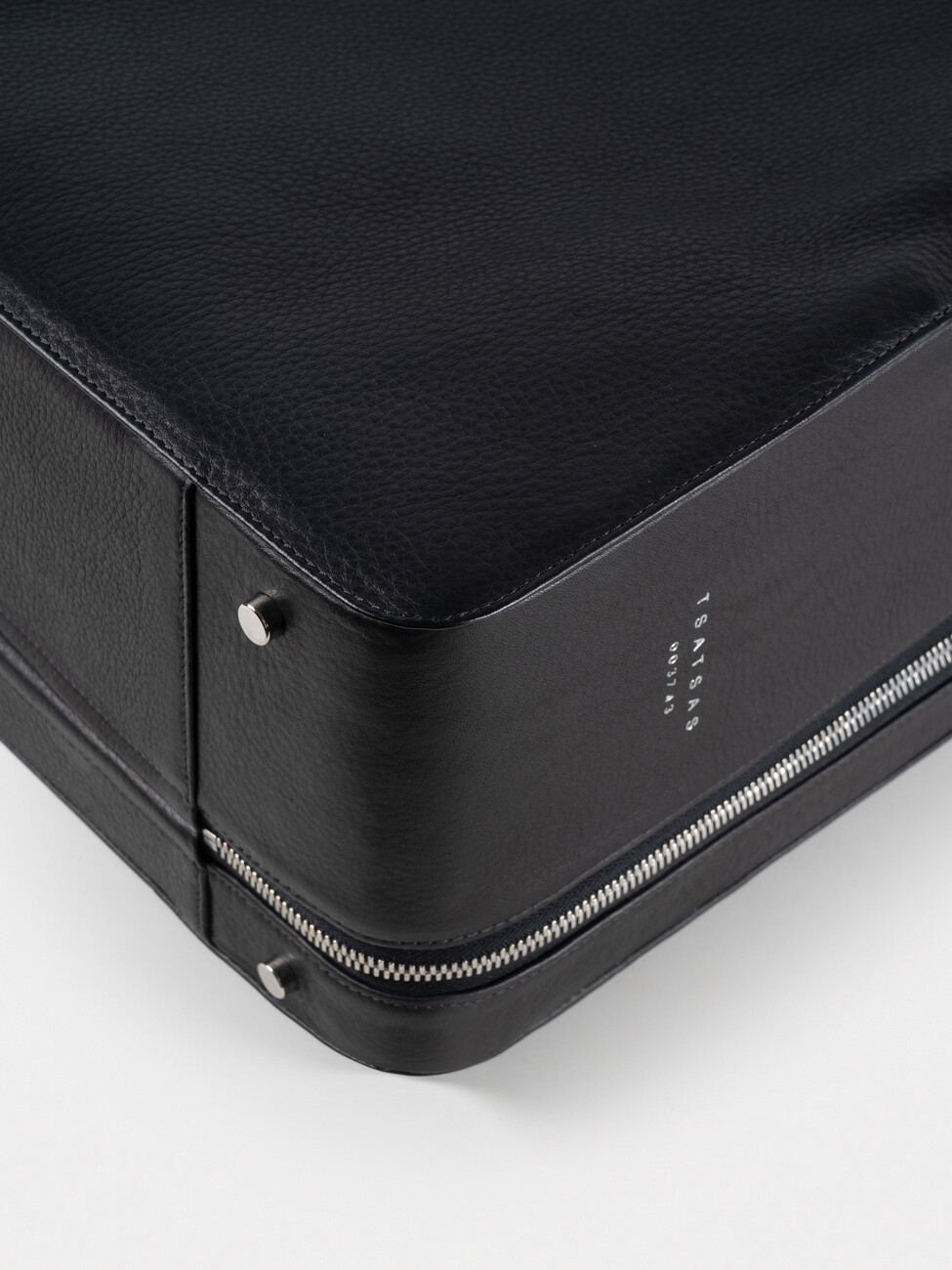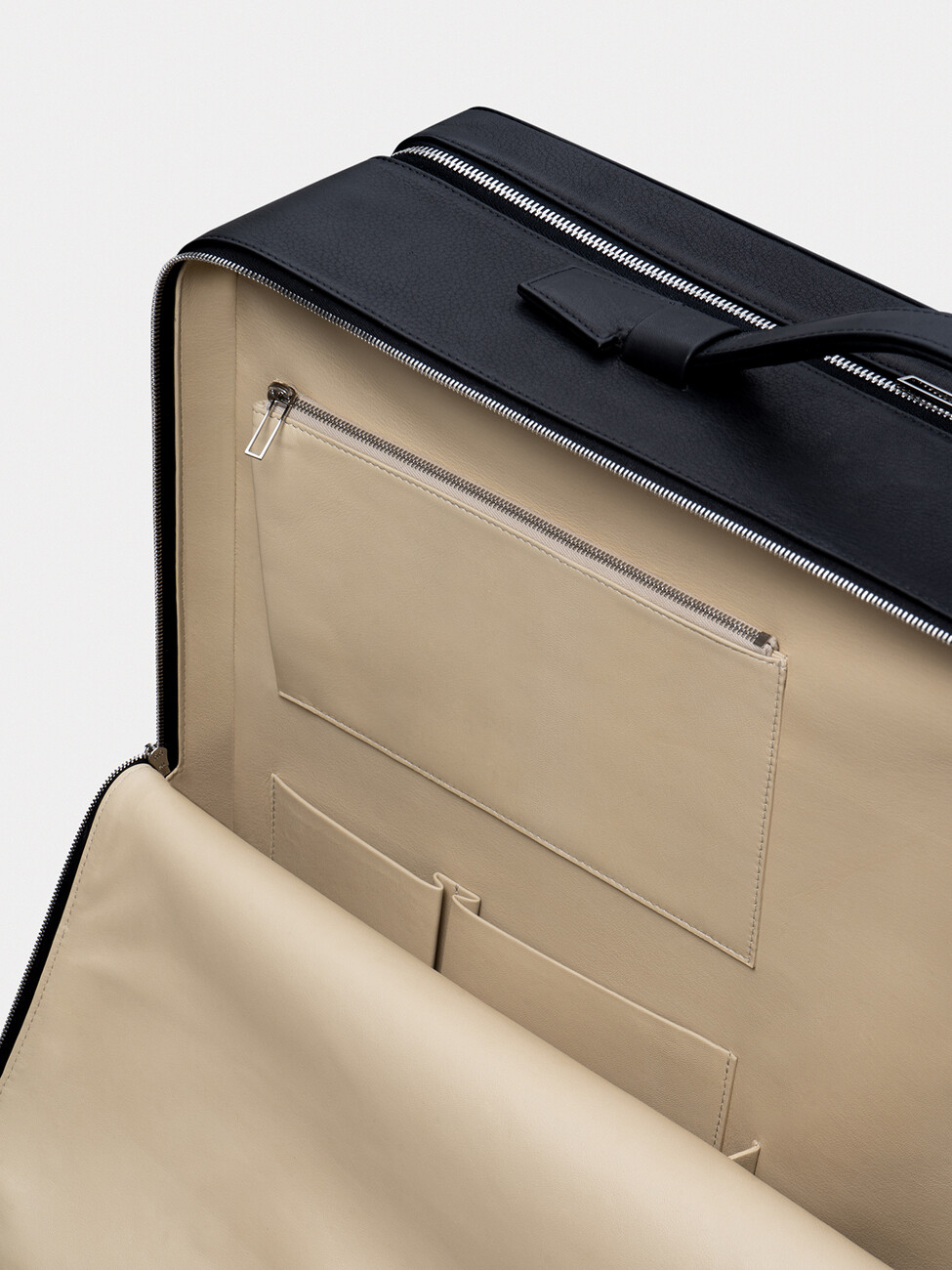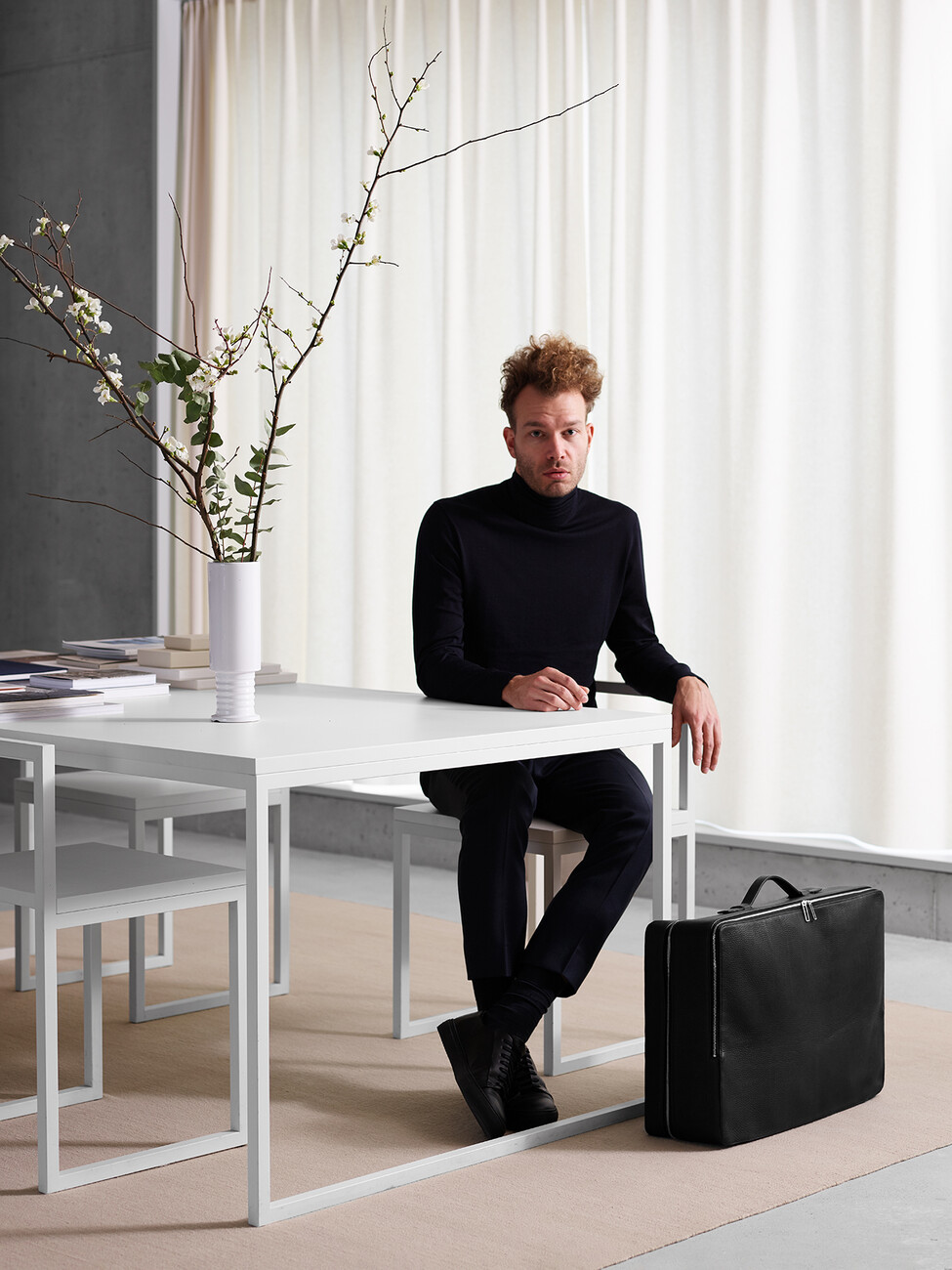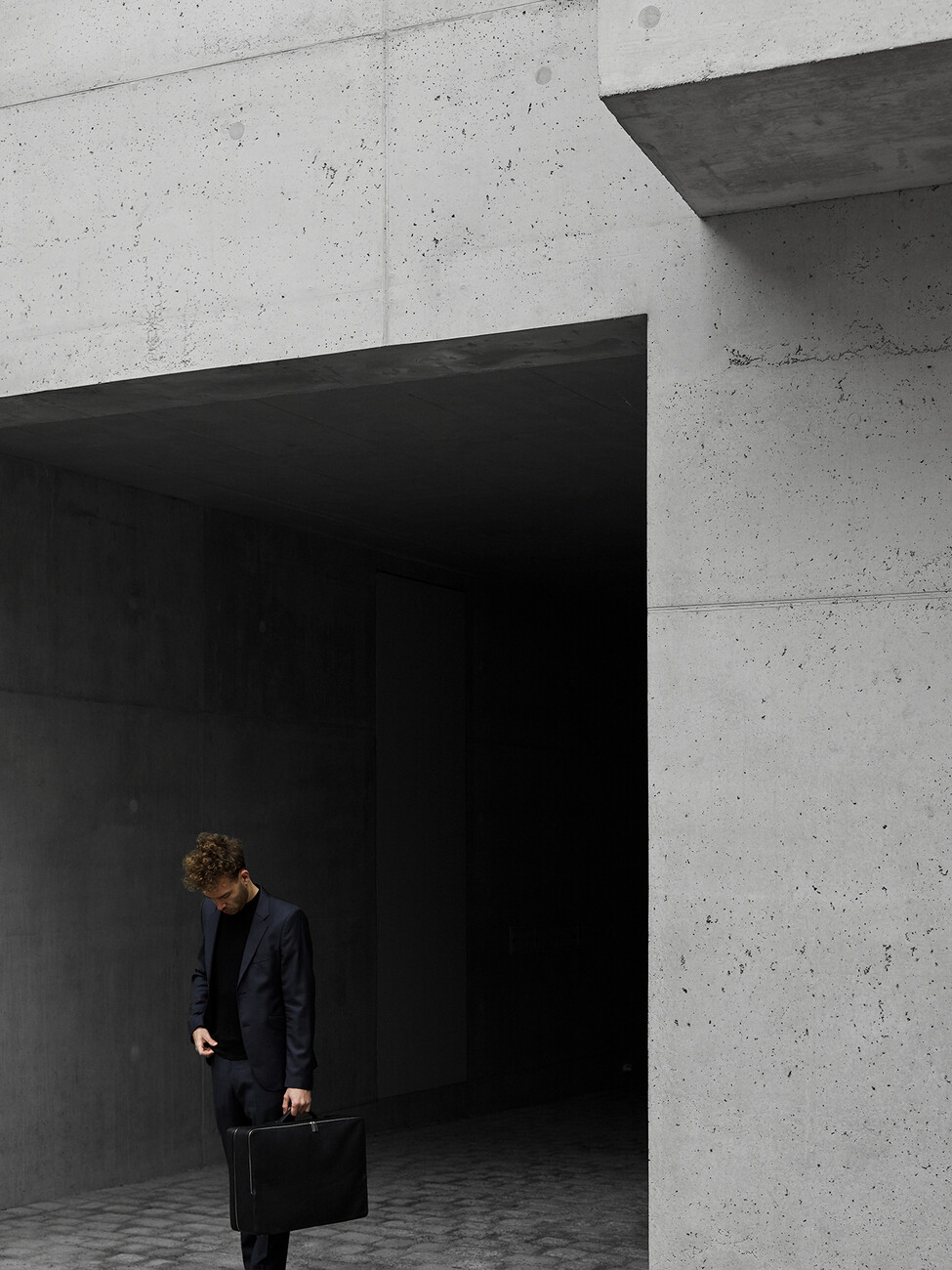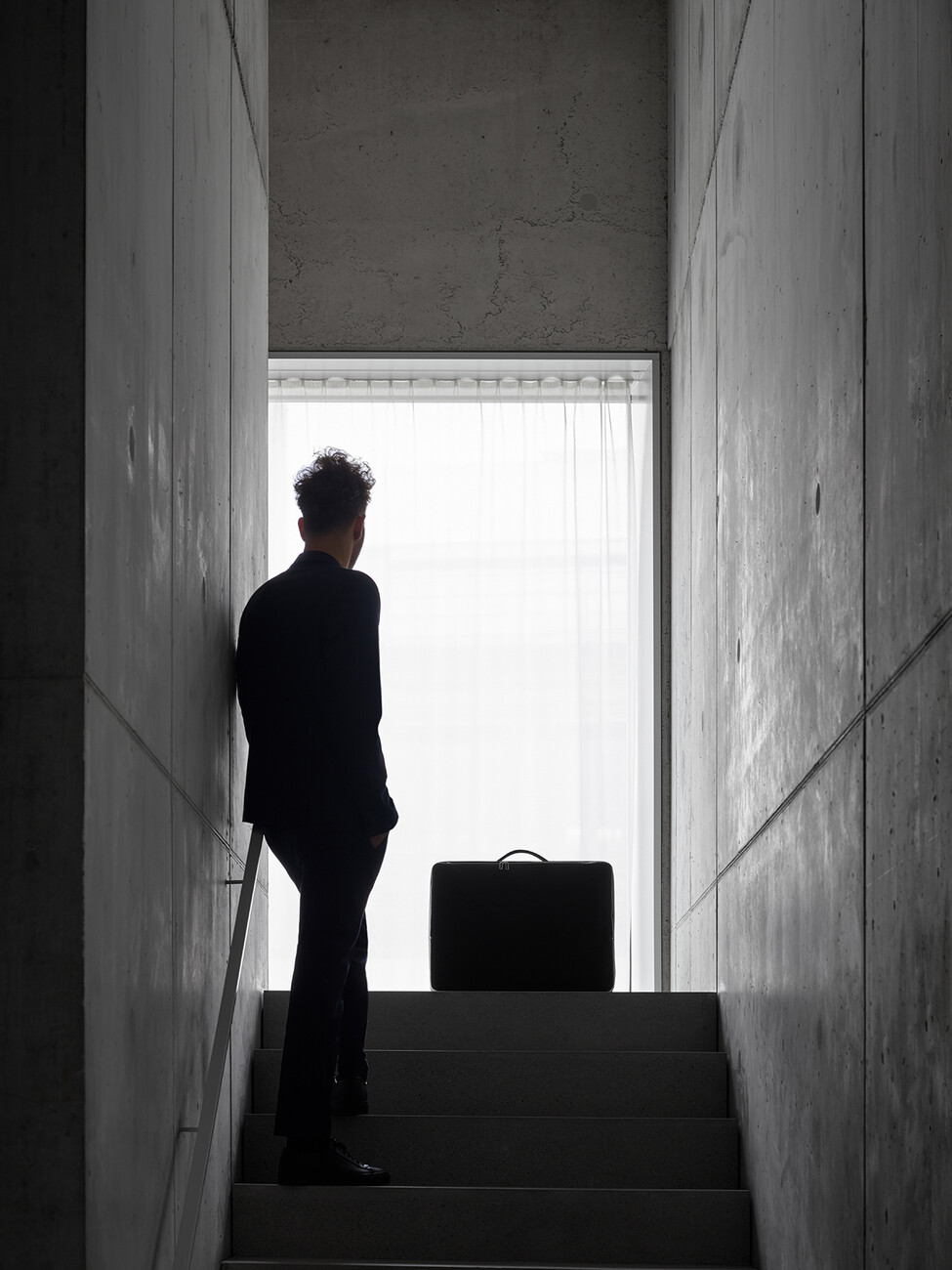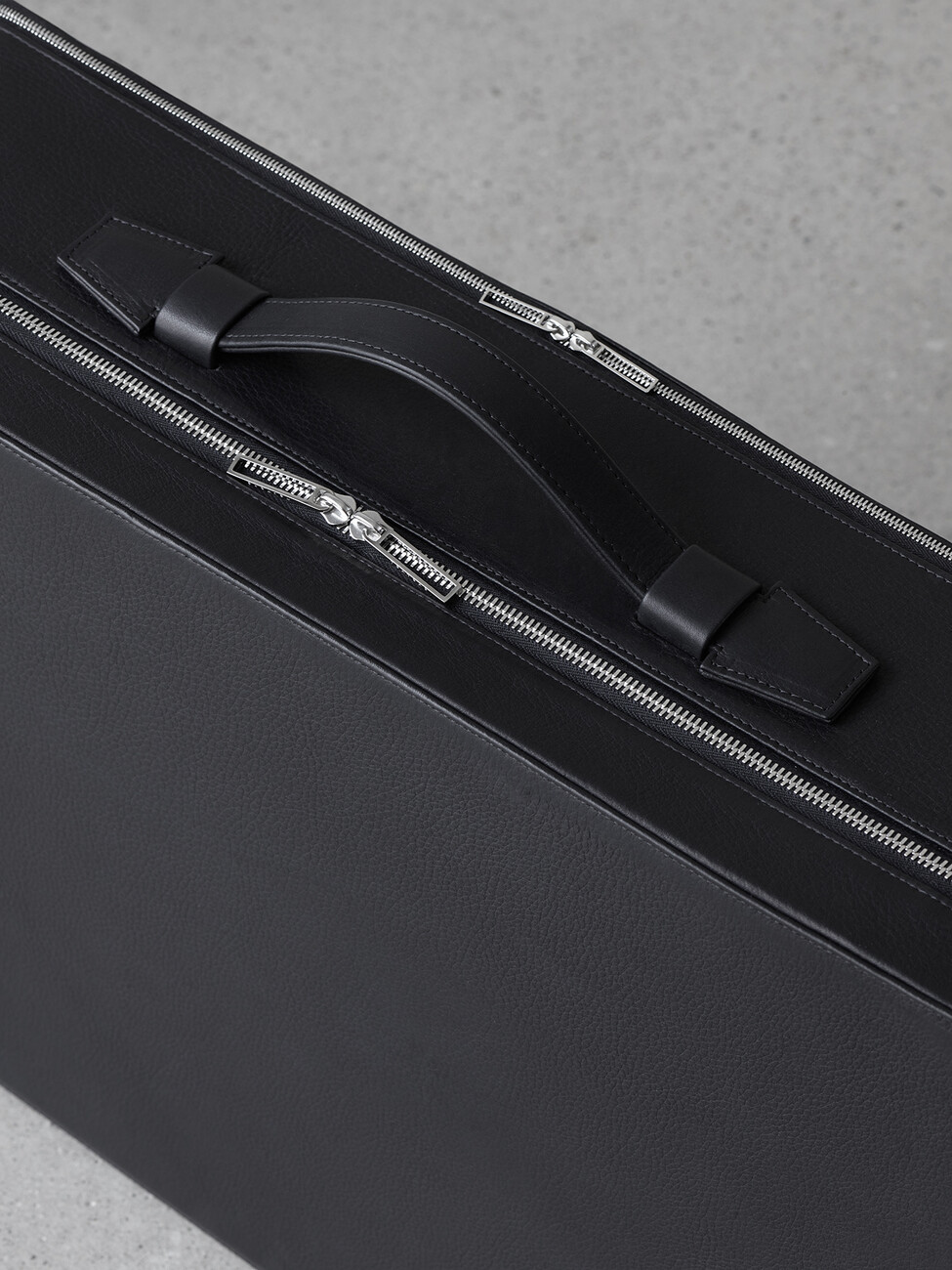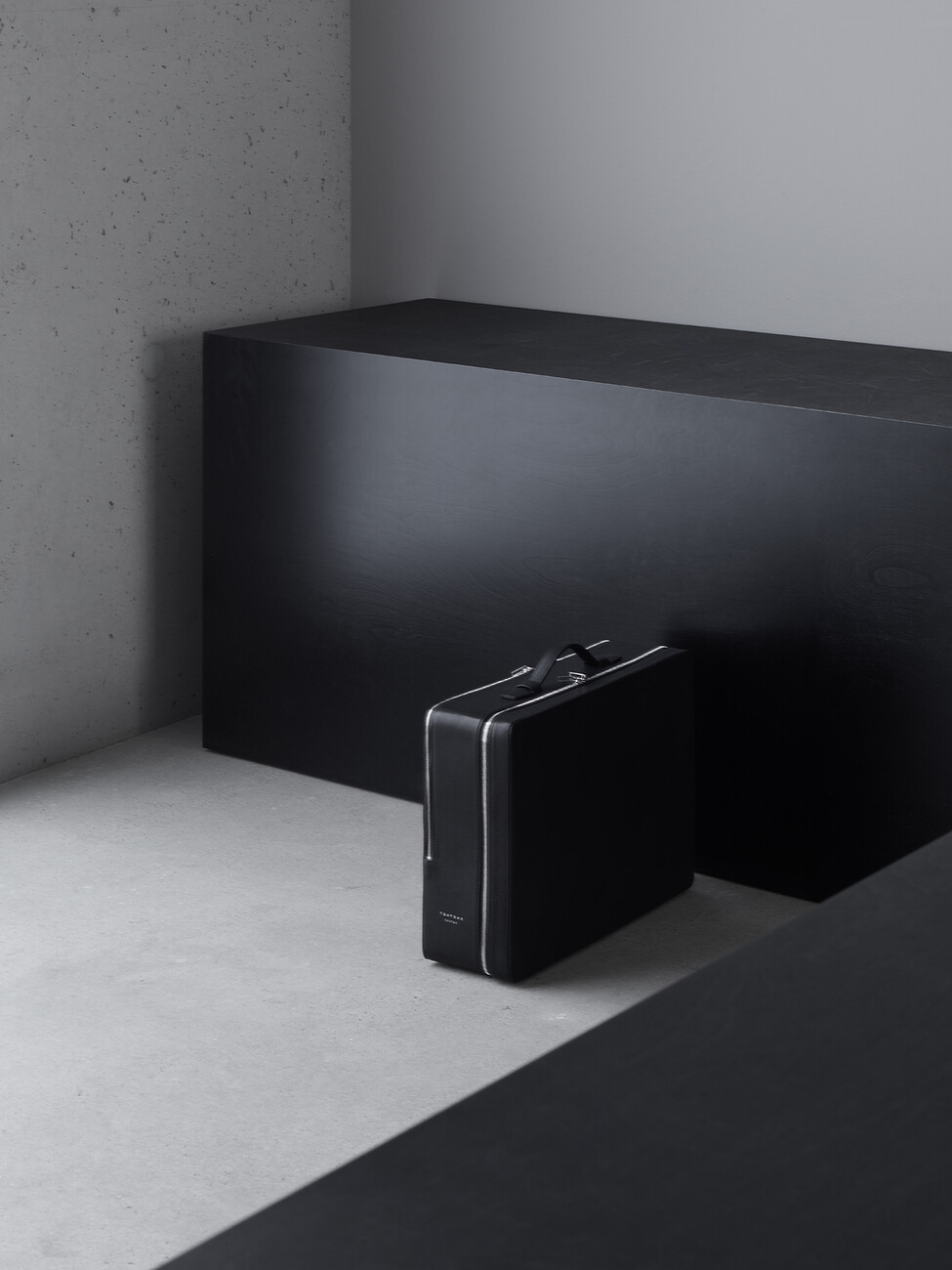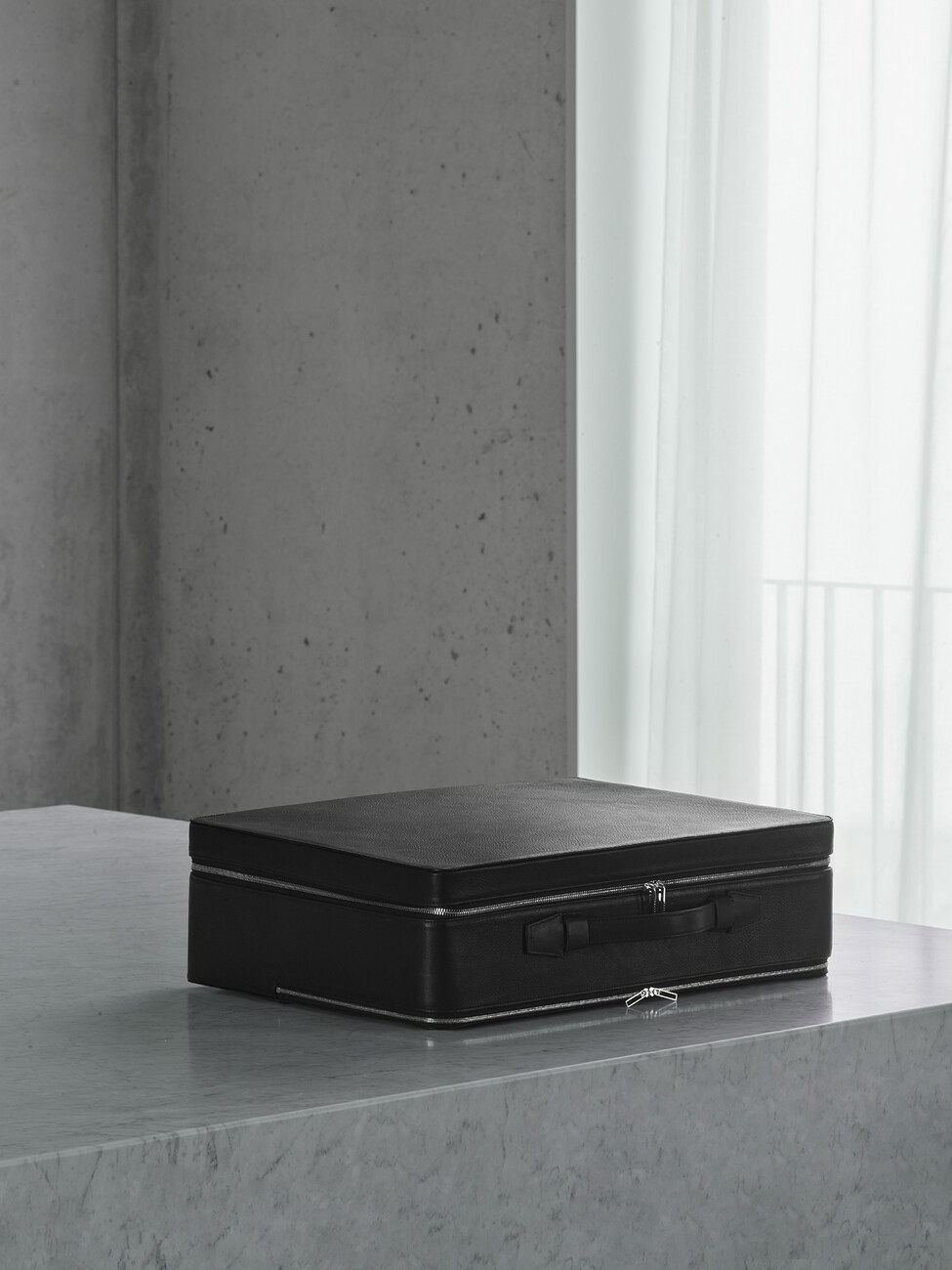A green conscience
Against the background of the pandemic, well-considered decisions, taking time for experiences, but also a holistic view of the environment are more important than ever. COVID-19 has put the brakes on our frantic everyday lives. Fast consumption and ill-considered travel are no longer the order of the day. Travel as an experience has been given a different standing, has become a luxury as was the case decades earlier rather than the norm. In the same way that the experience of travel has come to be valued differently our approach to luggage should be a similar one: Thought through down to the last detail, with an appreciation for quality, sustainability and elegance. In collaboration with architect David Chipperfield, Tsatsas, the Frankfurt-based bag and accessories label, has designed “SUIT-CASE” a travel case that fully meets the new requirements made of being on the move.
Over a three-year period, Esther and Dimitrios Tsatsas and David Chipperfield tossed ideas back and forth in a kind of brainstorming and considered what “SUIT-CASE” should be capable of as a reliable travel companion. “Whether it’s a handbag, a rucksack or a clutch each of our designs is architecture on a small scale. Designing a bag, and producing patterns and prototypes is similar in many ways to dealing with form and space, with the user and their environment,” explains Esther Tsatsas. The two parties made an ideal fit: Chipperfield as a onetime frequent flier, who commuted between his offices in Berlin, London, Milan and Shanghai – and Tsatsas with their design and material expertise. “As a rule, I never check in luggage. The question then is: Can I fit everything I need for a four or five-day trip, which is typically how long I travel into one bag? That includes documents, my shirts and ideally a suit. Those were my own wishes and they formed the brief for the suitcase,” says David Chipperfield. Which is why the case with the minimalist, clear silhouette has a compact size and qualifies as hand luggage. Weighing in at just 2.7 kilos it is also a lightweight. “In every detail we tested down to the last millimeter what material thickness and dimensions would offer the perfect balance between sturdiness and weight,” says Dimitrios Tsatsas.
The case is made of wood fiber covered in fine cowhide, and dyed in matt black or intensive dark brown. It is manufactured in a German tannery whose environmental efforts have earned it the highest distinction from the international Leather Working Group, Gold Certified. By contrast, the metal fittings are made in Italy of recycled brass. “SUIT-CASE” is completely plastic-free. What tipped the scales for Chipperfield and prompted him to collaborate with the internationally bag label was the fact that Tsatsas understand their trade and share his architectural approach and appreciation for the decisive details. “This was a collaboration that that really reassuring, because we did not have to worry about quality,” says David Chipperfield. While the design of the leather suitcase is pared back its interior is multi-functional: A spacious, pocket integrated into the front of the case provides easily accessible room for documents and objects that might be needed quickly. The main compartment of the case accessed by opening a polished two-way zip offers is divided into two sections, whose content is protected by a canvas cover: One section can be used for garments worn daily and a pair of shoes, the second for a suit that can be hung or affixed on a brass coat hanger designed especially for "SUIT-CASE". As the inside of the case is lined with soft nappa leather packing becomes almost a sensual experience.
The decision to forgo both wheels and the customary telescopic handle used to pull the case behind you also underscores the new appreciation of travel. “SUIT-CASE” is hand-crafted in a fine bagmaker’s studio with a tradition of over 40 years. For the fine details various prototypes of the case were allowed to accompany David Chipperfield in his everyday work over a period of several months. This was the only way of showing what adjustments were needed to perfect the case. For example, in order to make it easier to stow the case in luggage racks the handles were modified. “These are the things that emerge when things are tested in real life, and that you can’t deduce from work in the studio,” says Dimitrios Tsatsas.


